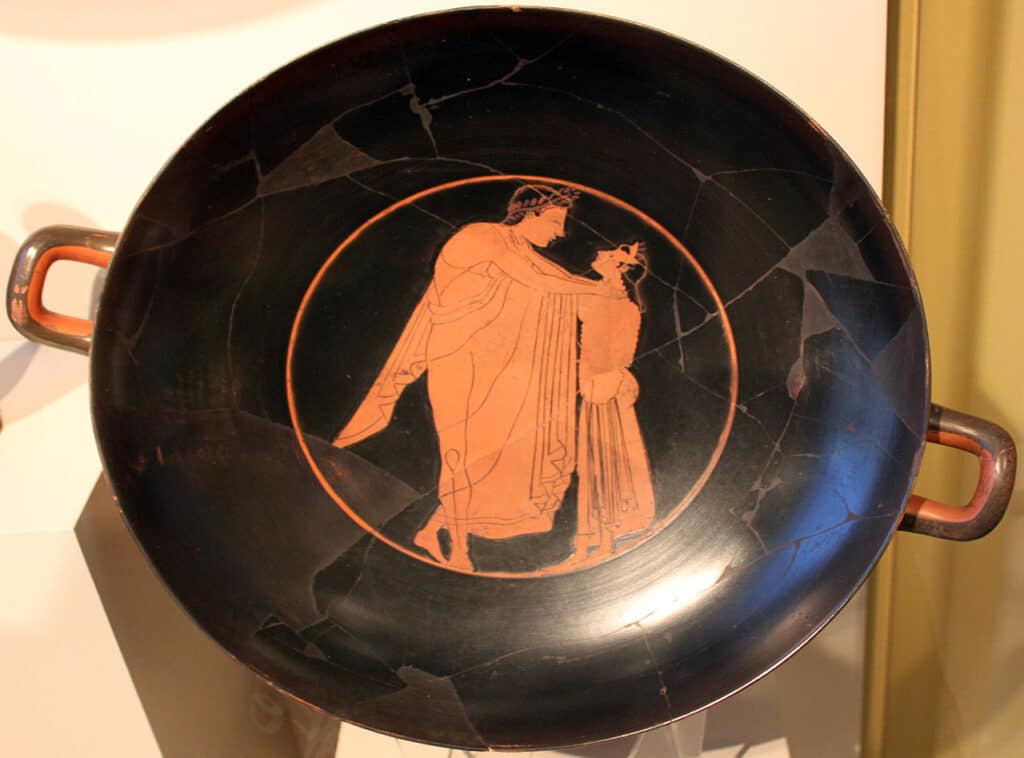

The Milesian Tales was originally a collection of works of erotic literature written in Greek by Aristides of Miletus (2nd century BCE), consisting of short picaresque stories of romantic adventure.
Aristides of Miletus was regarded as the father of “Greek Romance”, a new genre for the time. He wrote six books of short stories, fables, and folktales of love and adventure. The writer may not have been from Miletus; he may have based his stories on the city because, at the time, Miletus was famous for its inhabitants’ luxurious, easy-going lifestyle, an ideal background for his tantalizing prose.
The work of Aristides of Miletus is lost. There are, however, some fragments that have remained, translated into Latin by Lucius Cornelius Sisenna, a Roman historian of the time of general and statesman Sulla (early 1st century BCE).
Aristides of Miletus’ best-known work was Milesian (Μιλησιακά in Greek). Plutarch described the book as debauched. The Milesian Tales inspired Latin poets, notably Ovid and Petronius, and in turn, the influence passed on to books by medieval and Renaissance writers.
The Milesian Tales is said to have been popular at the time. The Parthians defeated the Romans under Marcus Licinius Crassus at Carrhae (53 BCE). After the battle, the victors found a book of Aristides of Miletus in the sack of a Roman soldier and displayed it as a sign of Roman decadence.
Roman author Petronius is said to have used Aristides’ stories by inserting them into his own. One of them was the Matron of Ephesus, who is cited several times in Plutarch’s Moral Works.
Eventually, the term Milesian Tales was used generically to denote erotic literary works similar to the stories in Aristides’ books.
The kind of ancient Greek erotic literature genre Aristides of Miletus introduced is a type of first-person travelogue narration from memory, where the protagonist encounters new characters who tell him stories, which he incorporates into the main story.
The narrator is a dishonest but likable rogue telling stories with elements of adventure, love, romance, and eroticism. His shameless stories with several episodes and sub-plots often conclude with a surprising plot twist at the end of the tale.
While the original six stories of Aristides of Miletus have not survived, the best complete example of them is Apuleius’ Metamorphoses (also known as The Golden Ass), a Roman novel written in the 2nd century CE in the style or Aristides.
The protagonist of the novel has an insatiable desire to see and practice magic. He finds a spell that would transform him into a bird. While trying to perform the spell, he is accidentally transformed into an ass. This leads him to a long metaphorical journey full of inset tales. The goddess Isis finally saves him, and he joins her cult.
Apuleius introduces his novel with the words “At ego tibi sermone isto Milesio varias fabulas conseram” (“But let me join together different stories in that Milesian style”). The statement suggests that the entire collection of stories is a Milesian tale.
Apuleius was one of several later authors who followed the erotic literature style of Aristides of Miletus. His Milesian tale also served as a model for the different narratives that constitute Petronius’ Satyricon, a novel about the exploits of Encolpius and his handsome sixteen-year-old slave and intimate companion, Giton.
Milesian tales quickly gained a reputation for bawdy stories. Ovid almost outdid the boldness of Aristides and other writers with his own Ars Amatoria (The Art of Love) in which he advised men on how to find women, women how to keep a man, making out but not in public and other such advice. Augustus is said to have banished Ovid from Rome in 8 CE over the book, but historians contest the exile.
The ancient Greek satirist and philosopher Lucian of Samosata praises Aristides in his dialogue on the kinds of love, Erotes. In the dialogue, he says that after a day of listening to erotic stories, he felt like Aristides, “that enchanting spinner of bawdy yarns”.
Aristide’s brazen heroes and spicy, fast-paced yarns resurfaced in medieval literature. Geoffrey Chaucer’s “The Miller’s Tale,” the second of “The Canterbury Tales,” is in the tradition of ancient Greek writers, as are some of the titillating tales in Boccaccio’s “Decameron” (1348-1353) or the “Heptameron” of Margaret of Angoulême (1558-1559). Petronius’ “The Widow of Ephesus” was the basis of Christopher Fry’s play “A Phoenix Too Frequent” (1946).
